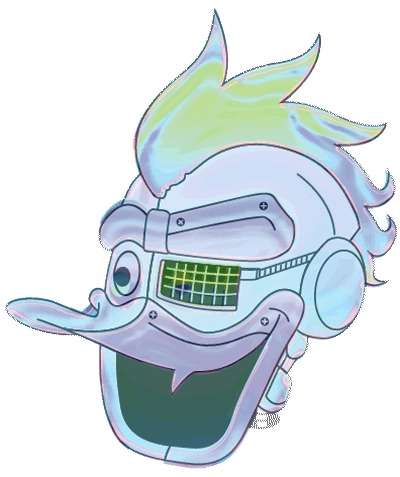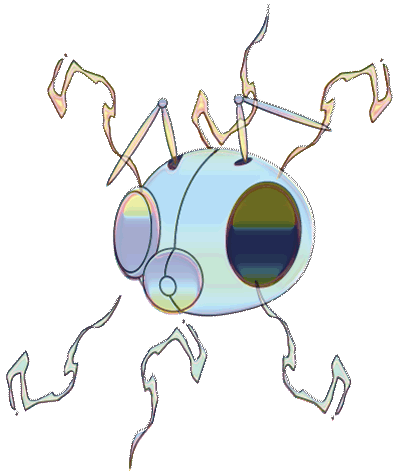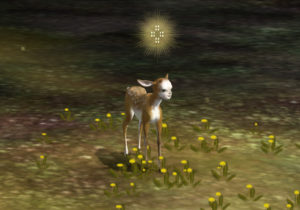



2nd part of Auriea Harvey’s and Michael Samyn’s retrospective on Furtherfield. In the 1st interview they discussed about the history of their previous incarnation as net art collaborators, Entropy8Zuper! This time Maria Chatzichristodoulou (aka Maria X), talks with them about their mutation into Tale of Tales and why and how this change came about…
Click here to read the 1st interview
‘Who are you?’ I ask. I am a bit confused: although I know them as Entropy8Zuper!, their most recent piece, The Endless Forest, is created by Tale of Tales. Auriea explains that E8Z! was very personal, as it was the merging of entropy8 (herself) and zuper! (Michael). ‘E8Z! is just the two of us’ says Michael.
It has always been like that, our little personal corner of the web… But with Tale of Tales, we took a step towards an audience in the sense that we wanted to make things the wider audience could enjoy actively.
In 2002 E8Z! Found the for-profit company Tale of Tales. Tale of Tales’s brief is to produce alternative commercial video games for a niche market that does not enjoy the violence and blood-shedding of most mainstream games. According to their website, their aim is to design and develop immersive websites and multimedia environments with a strong emphasis on narration, play, emotion and sensuality.
http://tale-of-tales.com/information.html (retrieved August 2006)
It seems to me that the current work of ToT is very different from E8Z!’s early work. Do they feel that they have lost something? Yes, they have, says Michael, but that was something they wanted to lose. The shift from E8Z! to Tale of Tales was a natural evolution for them. The main differences between the two have to do with their maturity as artists and as a couple, and the technological developments that took place from 1999 to 2003: E8Z! Produced work for each other, while ToT’s main aim is to reach audiences; E8Z! was operating on the crossover between art and design, while ToT looks at the cross-pollination of art and video games; E8Z! Produced work for the web while ToT’s pieces are downloadable.
ToT’s most well-known work? In fact, the only developed work they have released? Is The Endless Forest (2005-). This is a hybrid, multi-layered piece that operates on several levels: it is an online multiplayer game, it is also a social screensaver, a live performance environment, a virtual world, and a collective fairytale: In The Forest, you are a deer. You live deep in the idyllic, peaceful forest. You spend your time roaming around the forest with other deer. You eat, sleep under the shadow of the trees, drink water from the lake, rest by the ancient ruins, play with other deer and collect flowers. There are also things you cannot do in the forest: you cannot speak, for example. This is not just any forest… In The Endless Forest, magical things can happen: beasts can fly, all the flowers can bloom at once, stones can fall from the sky, and the rain can be gold. Nobody knows what the Twin Gods will come up with to entertain themselves… While in the Forest, there are no goals to achieve or rules to follow. Being there is what this experience is about.
So how did The Endless Forest start?, I ask. I actually know that the prototype was commissioned by the Musee d’Art Moderne Grad-Duc Jean (last visit 27/04/2007) (Museum of Modern Art of Luxemburg) in September 2003. (Now that I think about it, this is rather strange given Auriea and Michael’s comments about net artists selling their work to Museums!) “At that time ToT were working on 8, a research project which they tried to turn into a commercial game. This was the first time that they were trying to produce a commercial video game, and it was hard to find a balance between the mainstream publishers’ requirements and their wish to produce an alternative, non-violent and non-sexist title. 8 was still quite traditional in that it was based on action, had a clear-cut narrative and the player had to perform certain tasks in order to achieve his/her aim. So The Forest came up as a reaction against these very specific sets of rules about how a game should function. ToT came up with the idea on a train-ride back from Luxembourg: the train was driving through a forest (Ardennes) and they could see deer roaming in it… It was a bit of a joke to start with,” They giggle.
[M:] So next to that (8) was The Endless Forest, which was sort of an anti-game. It was like ‘you play a deer, in a forest, and you can’t talk, and you can’t level up’, ha ha! And there’s lots of things you can’t do, and that’s, like, cool! ? Once ToT created a forest it took a long time for the project to fully emerge. Originally they were not at all clear about what this forest would be or how it would evolve. There was not a single deer in the prototype forest that was presented, for example.
One of the reasons E8Z! had decided to stop Wirefire was that they found its ‘liveness’ both limited and limiting. Wirefire could only be live once per week, while Auriea and Michael were performing in it:
M: It only lived an hour per week, while there were still people who were very valid and active participants there. They could probably do a performance themselves or whatever. So that’s where the idea of a persistent world came from. Everybody could be present in the environment, and there’s no division between the artist and the audience.
So the idea was to create The Forest as a persistent world depending for its aliveness on its inhabitants rather than its creators. It took a while to get it started as they were busy working on 8. They only went back to work on The Forest in 2005 once it was clear that 8 was too weird and different a game for it to get commercial funding. By then, they had also realised how difficult and expensive these games are to produce, and what building the full design of The Endless Forest would mean in terms of money and time… Eventually, they came up with the idea of chopping the Forest’s complex design into pieces, seeking arts funding to produce each piece and release these sequentially.
From the very beginning of their career, first as E8Z! and then ToT, Auriea and Michael have explored ways for their work to be financially self-sustainable: as E8Z! they did a great many commercial projects, for example projects like Museum of Sex (2002), Making Waves and Next Wave Festival (2002-3), Oblomow (2006); and never sought arts funding. Instead, they sustained their art through the income generated by their web design. They even tried to raise money through the art itself: skinonskinonskin was presented as a pay-per-view project, whereas the Godlove Museum has recently been rebuilt in flash and is available to download for a fee of 20 euros. And, although as ToT they have been dependent on arts funding for the development of The Endless Forest and have not generated any income as yet, their brief is to produce commercial games people will want to pay for.
The Endless Forest is available to download and play for free. This is because it was released piece by piece, and so ToT felt that they couldn’t charge for the first very basic version of the game. Auriea explains that another reason they don’t charge is that this is their first game environment, and they wanted to have as many people/deer in the forest as possible in order to test how the environment works and receive feedback from players. This is a way for them to demonstrate their abilities as game developers and become known in the gaming world. They think that this approach worked as there are more than 13,000 deer currently roaming in the forest (!), and they can see that there is an audience out there interested in their work. This is unlike most net art practices, which are normally accessible online and open to all. Why do Auriea and Michael think that it is OK to ask people to pay to view their work?

It all started because they only wanted a ‘serious’ audience to be able to access their work, explains Auriea. To them, skinonskinonskin was a very personal project, and they wanted to ensure that it would only be accessed by people who would make an informed and conscious decision to visit it. This was more of a symbolic gesture than a real attempt to generate income, claims Auriea. People had to pay minimal fees, and the money generated was shared. Charging people to view the project was just a way of protecting the piece ? and themselves? by anyone who wasn’t interested enough in it.
Charging for downloads of the Godlove Museum is not the same: this time, they really felt that, since re-building the project on a more sustainable technical platform to make it fully accessible was really hard work, it is only fair to ask people who want to download this new version of the project to pay a fee. They did not know whether this would work, and they saw it as an experiment in e-commerce. They both find it difficult to understand why paying for net art is so taboo: people pay for books, magazines, movies, music and games… They pay for a night out with friends. They often pay exuberant prices to collect art objects shown in galleries. Why is it taboo to charge people to view and/or download a net art piece? E8Z! ask. People even pay for the technology to view the piece, like their hardware, software, and Internet connection, says Michael, rather baffled. The only thing they refuse to pay for is the art itself…
I have to admit that I am the culprit of this attitude myself. When I realised I could download a new version of the Godlove Museum for 20 euros, I thought, ‘Well, that’s only fair; that’s not more than I would pay for a book’, but for some reason, I was still resistant to the idea… In the end, I didn’t buy it. I can’t even explain why I didn’t buy it! Why this resistance to pay for art on the Internet? I ask E8Z!:
A: I think it’s the arts community and the way they’re used to relating to what people produce. ‘Art should be free’ someone said to us, you know. We’re like, well, you pay for movies and music… But the sad thing is that most people wouldn’t look at it seriously, even if it were free and online. And I think that this is what happened with net art: people stopped looking at it seriously, stopped examining it. With games, it is completely different. People seriously look at it. They’ll play a game that lasts twenty hours, you know? They’ll play it all the way through, and then they’ll play it repeatedly and again so they can do a speed run and then do it in two hours. And then they’ll record it and put it on YouTube. So it’s a different audience, and that’s the audience that we decided we like better. Not only will they look at, dissect and criticise what you’re working on, but they’ll also pay for it.
Michael thinks that the privacy of a net art experience is another factor that deters people from paying for it: it lacks social status. Visiting a gallery, going to the cinema, and going out with friends are all social activities that may help define one’s identity as a popular, well-educated, cultivated, intelligent person. On the other hand, viewing art online in the privacy of one’s house is something that no one will even know… Why on earth would one want to pay for such a ‘pervert’ experience? Laughs Michael. Whatever the reasons this doesn’t work, it doesn’t: hardly anyone has paid to download the Godlove Museum…
Tale of Tales considers it extremely important that they eventually produce projects people will want to pay for. Whether this is called art or entertainment is, for them, irrelevant. They have never wanted to work within a pure art context, says Auriea, as art means nothing to the culture. Absolutely nothing. They have always worked on the borderline between art and something else, like crafts or entertainment, that is more relevant or accessible to popular culture. They think that games are much more successful in involving their users in two-way communication than many ‘interactive’ art projects have been.
It emerges that they have both been keen game-players themselves. Auriea gets very excited talking about the first games she played. Tomb Raider, for example, was a huge inspiration, she laughs. There has been a very strong community element about many MMO (Massively Multiplayer Online) games, and ToT greatly like this. It reminds them of the early Internet. It is about communication, exchange, and limited hierarchy.
M: For many game-players, playing becomes interwoven within the fabric of their lives, and this is another element that Auriea and Michael like about games: this blurring of the boundaries between reality and fiction, when the fairytale becomes part of one’s everyday life. This is how they experienced Wirefire while it was still active, as another space, always available, where they could withdraw together once per week. They hope that this is how The Forest experience will be for its players:
A: So you go in the forest and play for five minutes and then you go off and do whatever you want. Or you come back to your machine, you notice that it’s playing, you ran around for a little while and then you stop. And so it becomes a part of your life, you know… Something that you play for a few minutes, but then it stays with you for the rest of the day. Or something you think about every now and then… Or you want to go back and visit a certain place, you know… For us that’s what Wirefire was too, like this place we visited for an hour every week.
Do they think that The Endless Forest is similar to other popular virtual environments like Second Life? Yes, they both think that it is, because, like Second Life, the main aim of the environment is for people to socialize, hang out together, have fun and possibly collaborate, while it lacks the central attributes of other MMO games such as specific rules, tasks, targets, violence and competition. On the other hand it differs from Second Life in that is is an authored environment. Whereas SL duplicates elements of RL within a virtual context, The Forest is a fairytale world and places its users straight within a specific narrative. Auriea and Michael’s work has always been about story-telling: they might not produce linear stories with plots, but they like to create narrative environments that transport audiences/users from their everyday lives into the context of open-ended, multi-layered fictional worlds.
ToT are currently developing a new project called The Path. This is a single-player PC game they hope will become a commercial project that people will be willing to pay for. The Endless Forest experience makes them think that there is an audience out there that appreciates their work, and this is an audience that they would like to approach. Incidentally, although there are no official studies or statistics, ToT have evidence from the players that participate in the Forum. that the majority of their players are female, which is unlike most other MMORPGs. ToT hope that, eventually, they will become independent of public arts funding by being able to generate commercial income.
[M:] There is an audience there, so we think that maybe we should work together with the audience rather than the funders. Maybe that’s a deal we can do with them, like ‘you pay, we make, OK?’ ha ha! We’ll see, it’ll be an experiment…
I think that by now it wouldn’t come as a surprise to say that, when asked about their influences (other than games!) Auriea and Michael refer to paintings: they talk about Baroque and Gothic art; Michael also talks about old Flemish painters. They talk about their love of craftmanship and they attempt to shock me by stating that ?cathedrals are the best 3D narrative environments?. They consider themselves ‘conservative’ (this is a word they repeat quite often) because they insist on story-telling, figuration, and content. They are against cynicism. They believe in hope and beauty. Through their art they want to affect communities and give people joy. And they talk about their work with such affection, as if they speak of a child: Auriea describes how she feels physically ill when their server is down…
Do they come from another time?
Well, whatever era they come from, I wish the best of luck to these two pragmatic-dreamers-in-love…